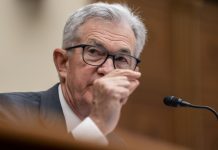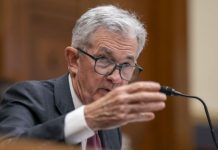Sept. 13 (UPI) — U.S. consumer prices rose 0.6% in August for a total 12-month increase of 3.7%. Gasoline prices accounted for over half of the August increase, according to Wednesday’s release from the U.S. Bureau of Labor Statistics.
Inflation for all items excluding food and energy rose 4.3 percent over the past 12 months. August inflation was the highest monthly increase of 2023.
But the annual inflation rate is steadily slowing, from the 6.3% last August to 3.7% this August.
In the face of those monthly numbers, U.S. workers are earning less in real wages, adjusted for inflation.
In a separate Wednesday release the BLS reported real average earnings for all U.S. employees decreased 0.5% in August. Average earnings were up by 0.2%, but were offset by the 0.6% consumer prices increase, resulting in the net real average earnings decline.
The Consumer Price Index showed energy prices rising 5.6% in August, while food prices were up 0.2%. Gasoline prices were up 10.6%. But on an annual basis, energy prices in August were down 3.6% from a year ago.
Grocery prices for meat, poultry, fish and egg prices were up 0.8% in August while pork prices rose 2.2%. Food prices away from home were up 0.3%.
Used car and truck prices fell 1.2 % in August following a drop of 1.3% in July. That brings vehicle prices down by 6.6% from a year ago.
With energy and food excluded, the shelter price index was the largest factor in the monthly increase. Shelter cost 7.3% more than a year ago.
Rent prices were up 0.5% while the index for owner’s equivalent rent rose 0.4% in August.
Compared to a year ago motor vehicle insurance cost 19.1% more, personal care was up 5.8%, new vehicle prices were up 2.9% and recreation cost 3.5% more.
James Knightly, chief international economist for investment bank ING, expects annual inflation to be back on a downward path by October.
The Federal Reserve Bank has been systematically raising interest rates in an effort to quell inflation without causing a recession. While progress has been made, inflation is still running higher than the Fed’s target of 2%.






